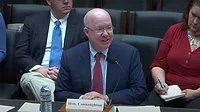How Aquagga and Regenesis are treating PFAS from AFFF
Webinar: Remediation Technology sits down with Brian Pinkard of Aquagga and Maureen Dooley of Regenesis to discuss options for destroying PFAS from AFFF firefighting foam.
For Remediation Technology’s first webinar, we discuss some of the developing and commercialized technologies that can affordably address EPA’s new proposed limits for so-called “forever chemicals” in drinking water.
The moniker “forever” implies just that – with Aqueous Film Forming Foam (AFFF) able to tame fires quickly by virtue of the hard-to-break down chemistry it contains. The hazardous per- and polyfluoroalkyl substances, or PFAS, these chemical formulations leave behind can be brought below the ambitious maximum contaminant levels EPA announced for drinking water in March, according to lab-scale studies examining technologies like hydrothermal alkaline treatment, or HALT.
Originally developed at the Colorado School of Mines, HALT is being deployed at the commercial scale by Aquagga, a startup company founded in 2019, who are fabricating systems for field demonstrations this year.
By the time EPA’s historic new MCLs for PFAS in drinking water go into effect in 2026, Aquagga’s CTO Brian Pinkard anticipates being able to assist a variety of clients requiring PFAS secondary treatment and destruction.
“The options are becoming more and more limited for waste disposal,” Pinkard says, noting municipalities that have banned incineration and other impediments.
“Most drinking water utilities, they don't want to have to think about putting the full treatment train together … they want to pay for a service that comes and takes the waste and deals with it,” Pinkard adds. “What we’re seeing is there’s a lot of interest from the solid waste management side of things.”
Then there’s Regenesis, who were recently featured in the winter 2022 issue of the REMEDIATION Journal, assessing the factors affecting in situ colloidal activated carbon (CAC) remediation of PFAS at airport sites.
Their patented colloidal activated carbon material, commercially known as PlumeStop, has been deployed at over 30 AFFF-release sites to remove PFAS from groundwater, says Maureen Dooley of Regenesis, industrial sector vice president at Regenesis.
PFAS detected at airports are dominated by PFOS and PFHxS. Due to the hydrophobicity of the sulfonate group, these perfluorosulfonates (PFSAs) also demonstrate the greatest sorption affinity to carbon (and CAC specifically) relative to other PFAS.
“This is a really good technology fit for those compounds,” Dooley says.
Another common option includes granular activated carbon ex-situ pump and treat systems, referred to as GAC systems, but they create waste – and hazardous waste disposal options are limited. CAC has no waste, operations or maintenance for clients to deal with. There are already a number of sites where PlumeStop has been applied in-situ, with no pumps and no emissions – Dooley compares it to a Brita filter.
“We typically cost 10-times less than pump and treat, and you can get really immediate results,” Dooley says, concluding that with the new proposed MCLs, for technologies like this, “this is when things get real … we stand to assist people that are confronted with this important problem, it’s not simple, but we have a cost effective and sustainable solution.”




